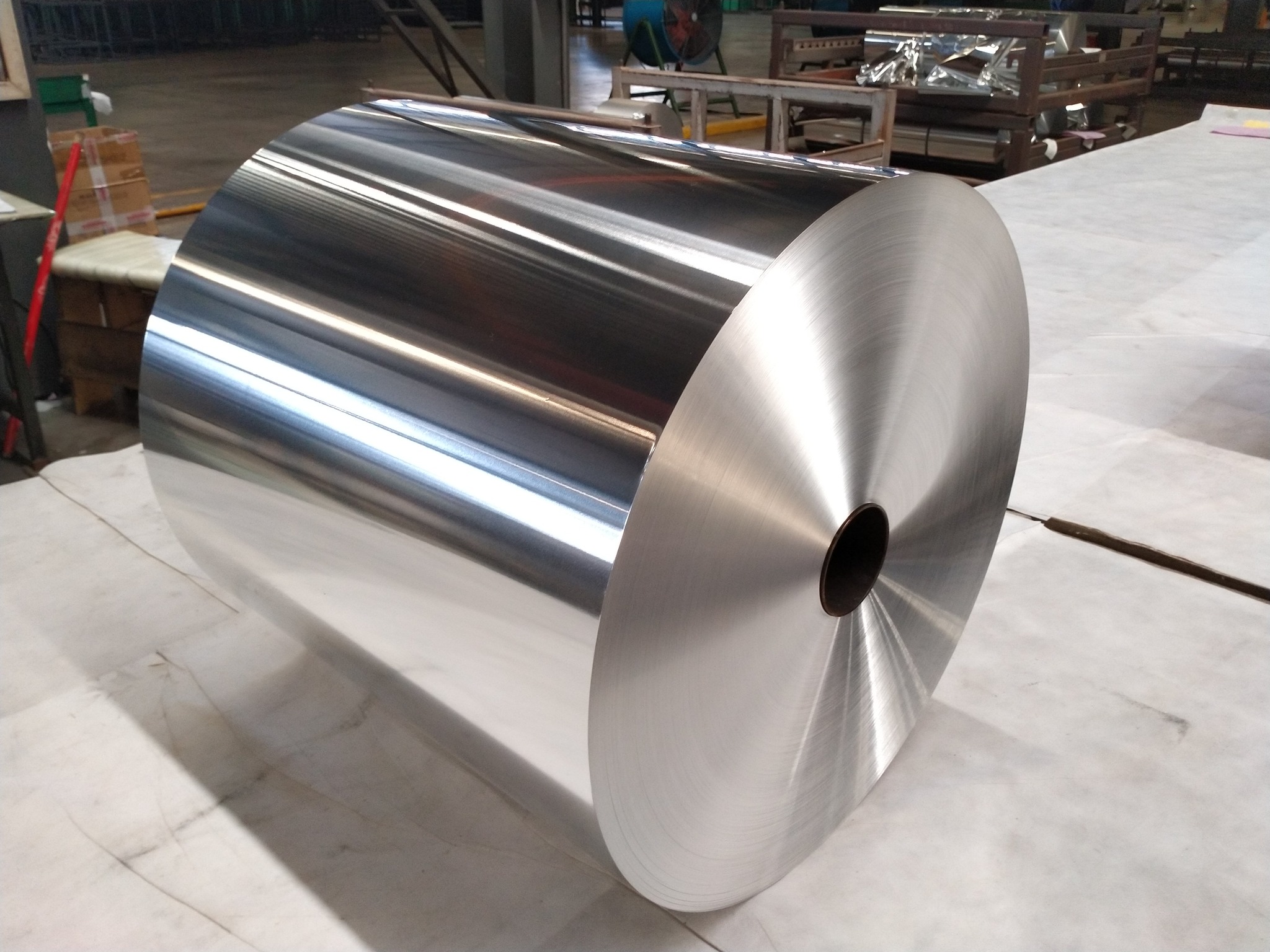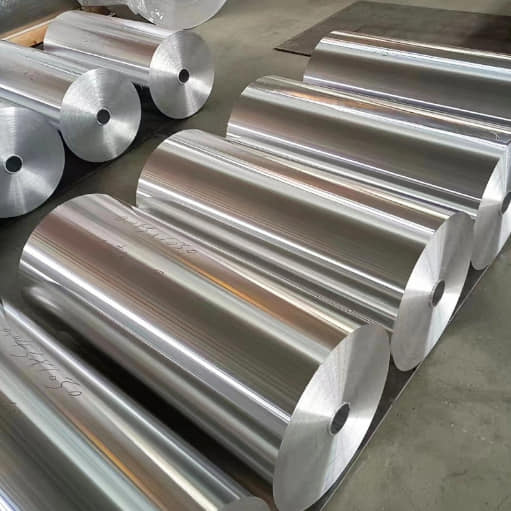Aluminum foil is made from an
Aluminum Alloy containing 92% to 99% aluminum. Available in a variety of thicknesses, widths and strengths. It is widely used in the manufacture of insulation materials for the construction industry, fins for air conditioners, electrical coils for transformers, capacitors for radios and televisions, insulation for storage tanks, decorative products as well as aluminum foil containers and various packaging applications. The popularity of aluminum foil in so many applications is due to several major advantages, one of the important ones being the availability of raw materials required for its manufacture. Aluminum foil is cheap, durable, non-toxic and oil-resistant. Additionally, it resists chemical attack and provides excellent electrical and non-magnetic shielding.

roll foil
Once the foil is made, the thickness must be reduced to create the foil. This is done in a rolling mill where the material passes multiple times over metal rolls called work rolls. When the aluminum sheets (or mesh) pass through the rollers, they are squeezed thinner and squeezed out through the gaps between the rollers. The work rolls are paired with heavier rolls called backup rolls, which exert pressure to help maintain the stability of the work rolls. This helps keep product dimensions within tolerances. The work roll and support roll rotate in opposite directions. Lubricant is added to facilitate the rolling process. During this rolling process, the aluminum sometimes must be annealed (heat treated) to maintain its machinability.
The foil reduction is controlled by adjusting the rotational speed of the rollers and the viscosity (flow resistance), quantity and temperature of the rolling lubricant. The roll gap determines the thickness and length of the foil leaving the mill. This gap can be adjusted by raising or lowering the upper work roll. Rolling on the foil produces two natural finishes, bright and matte. When the foil comes into contact with the work roll surface, a shiny surface is produced. To produce a matte finish, two sheets of paper must be wrapped together and rolled at the same time; once this is done, the sides that touch each other will end up with a matte finish. Other mechanical finishing methods, typically produced during converting operations, can be used to produce certain patterns.

As the foil passes through the rollers, it is trimmed and cut with round or razor-shaped knives mounted on the roller mill. Trimming refers to the edges of the foil, while slitting is cutting the foil into pieces. These steps are used to produce narrower crimp widths, trim the edges of coatings or laminates, and produce rectangular pieces. For some manufacturing and converting operations, webs that break during rolling must be rejoined or spliced. Common splice types used to join flat foil and/or back foil webs include ultrasonic, heat seal tape, pressure seal tape, and electric welding. Ultrasonic joints use solid-state welding (made from ultrasonic transducers) in overlapping metals.




